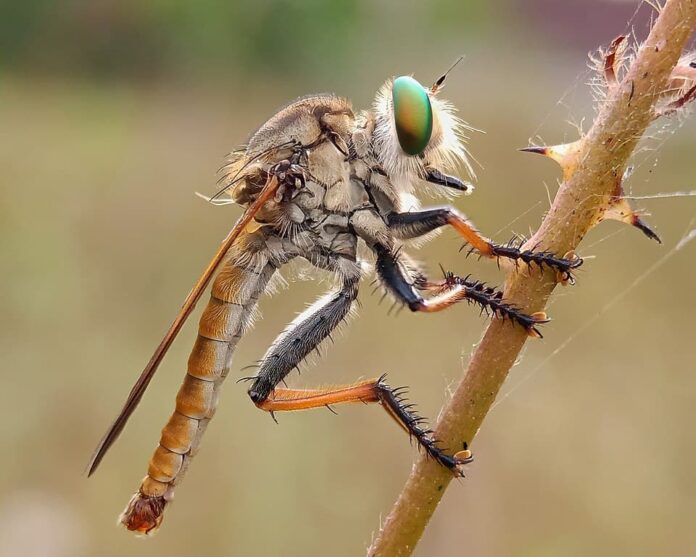None of us like flies, let alone knowing that dangerous fly species actually exist out there. Why would an insect that can be wafted away be dangerous to us? Dangerous fly species are the types that can bite, carry, and transmit diseases to humans which is absolutely unpleasant. No matter if you travel to a different area or hang out in open places, watch out for those. This is why I want to introduce you to some of the dangerous flies that you might come across. Let’s take a look at the list and see if you are familiar with any of them in your area.
1Black Fly
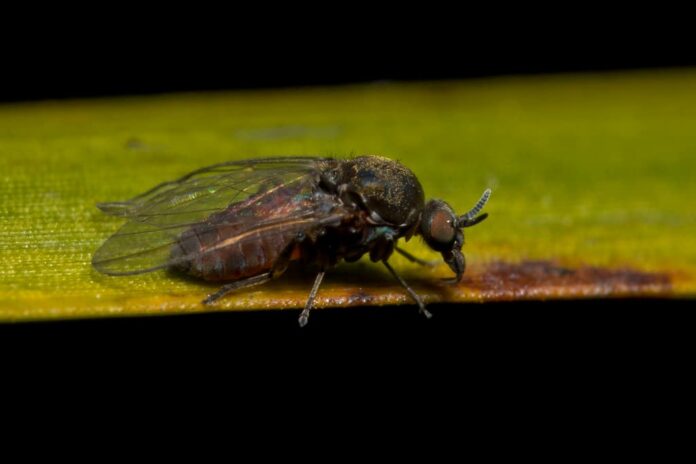
A dangerous fly species to avoid is the one that can bite us and transmit diseases to us just like this one. This fly species has an arched thoracic region and short antennae with large fan-shaped wings. These annoying bugs often appear in the late spring and early summer, and only the females that do the biting. Female black flies need protein to develop their eggs so they suck human and livestock blood while the males feed on flower nectar. Black flies are active during hot and humid days, especially in May and June.
Black flies are very common in the US, and they often live near bodies of water where their larvae grow. Bites from black flies in the United States are not really harmful since they don’t transmit diseases. Their bites are only dangerous for people who have severe allergic reactions to black fly bites. A common reaction is known as “black fly fever”, and the symptoms may involve fever, headache, nausea, and swollen lymph nodes. However, bites from black flies in Africa and South America can transmit a serious disease called “river blindness”. Generally, they bite on the back of a person’s neck, face, and head. Those bites from black flies result in itch, red bumps, and swell.
2Deer Fly
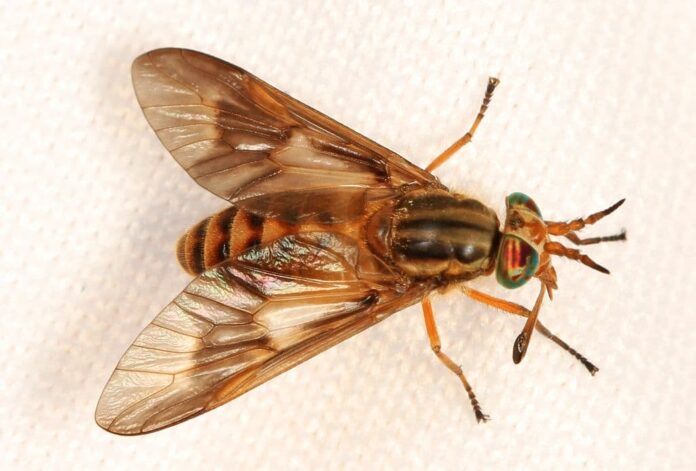
When it comes to painful fly bites, deer fly definitely belong to that list. This fly species have a medium-sized body and big head, and there are dark bands on their transparent wings. Deer flies have razor-sharp mouths that they use to draw blood, and the bite can inflict quite a pain. Along with the pain, red bumps or welts will also appear on the biting site. Just like black flies, deer flies are also common in the US, especially in the Southwest areas. These flies usually live around lakes, swamps, and other bodies of water where they lay their egg mass. Deer flies are active during the day, and they are attracted to carbon dioxide, movement, shiny surfaces, and warmth.
The dangerous thing about deer flies is that their bites can transmit a disease called “tularemia” or “rabbit fever” to humans. It is a bacterial infection with symptoms such as fever, headache, and skin ulcers. The irritations and swelling from bites usually disappear in a day or so, but it can get serious if you scratch. The good thing is that this disease is treatable with antibiotics, but it can be fatal without proper treatment. There are also people who have allergic reactions to deer fly saliva that can result in hives or wheezing. If you go outside in areas where deer flies are common, make sure to use DEET repellents and wear protective clothing.
3Horse Fly
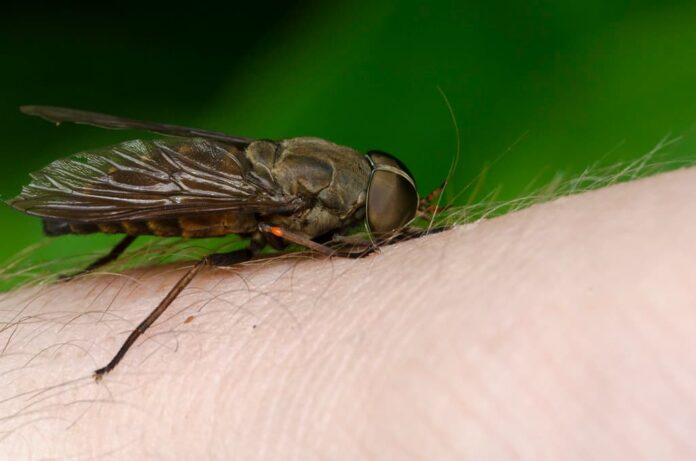
By the name, you can tell that this fly species definitely has something to do with horses. Have you ever seen horses swatting flying insects around them using their tails? Those are the horse flies that the steeds in the barn or out in the open try to chase away. Horse flies are dark in color, and you can recognize them right away because of their large size. These flies are active during the day, especially in the summer. They live near water and other warm and wet locations, and these flies are unavoidable in some regions.
Impressive for flies, they are fast and strong with their ability to travel more than 30 miles. Not different from deer flies, horse flies are also attracted to carbon dioxide, moisture, and movement, especially dark moving objects. Although harmless to humans, their bites are very painful because of their skin-piercing apparatus and two cutting blades. When sucking blood from livestock especially horses, horse flies can inject anticoagulants with contaminations in the host. These contaminations include bacteria and viruses that spread diseases that result in infection and negative impacts on livestock.
Horse flies can transmit a life-threatening disease to a horse known as swamp fever. A horse with swamp fever may display general signs of illness along with hemorrhage. Even without signs and symptoms, a sick horse can transmit the virus to other horses which is extremely dangerous. More than that, other diseases can reduce growth rates in cattle and lower the milk output of cows. It is very difficult to completely get rid of horse flies, but there are ways to reduce their population. From repellents to protective gear, there are quite several options that you can find.
4Robber Fly
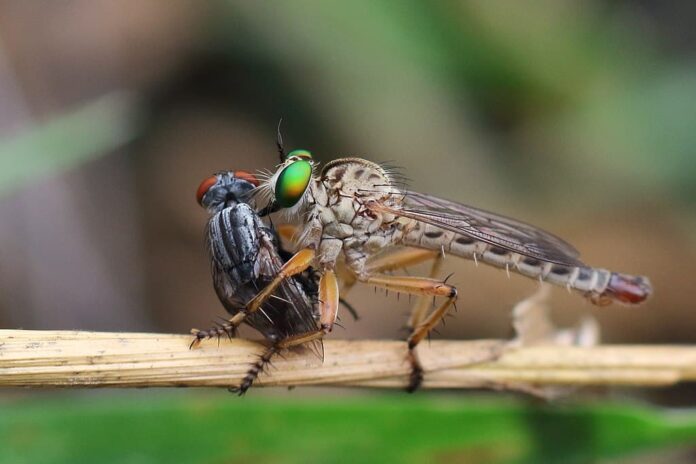
With the frightening appearance, robber flies actually look quite intimating. They have a big and hairy body with thin proboscis protruding from their head. Robber flies aka assassin flies got their name from their aggressive predatory habits during feeding. That protruding proboscis, which is where the name comes from, is what we should look out for. This fly species mainly feed on other insects, and these ambush predators also catch prey in flight. However, they will hesitate to use it to inflict a painful bite if disturbed. The good thing about them is that they will leave us alone as long as we don’t do anything to them. In fact, having these flies in the garden is actually helpful. That is because they feed on harmful pests such as grasshoppers, leafhoppers, wasps, white grubs, and more.
5Sandfly
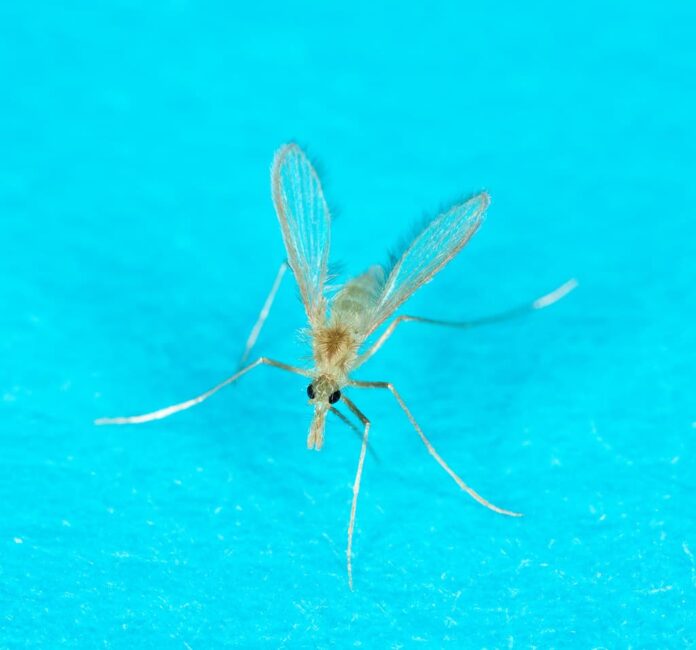
As for this one, it is a hairy and tiny fly species with brownish, gray, or golden coloration on its body. Another characteristic that separates them from other small flies is their extremely long legs that are longer than their bodies. Unlike most biting fly species out there, this one is active at dusk but they attack during the day sometimes. Sandflies live mainly in tropical and subtropical climates, and they breed in places with a lot of moisture. With long piercing mouthparts, these flies can suck blood from the host with ease. Because of the mouthparts, their bites are also very painful as well.
How can something as small as a mosquito can be among the most dangerous fly species? First thing first, sandflies like to bite around exposed areas such as arms, ears, faces, feet, hands, and legs. Their bites can cause blisters and small red bumps, and the biting sites may also itch and swell. In serious cases, some of their bites can transmit “Leishmaniasis” which is a parasitic disease that causes skin ulcers. This disease will heal within a year with proper treatment, but it can leave unpleasant scars.
6Stable Fly
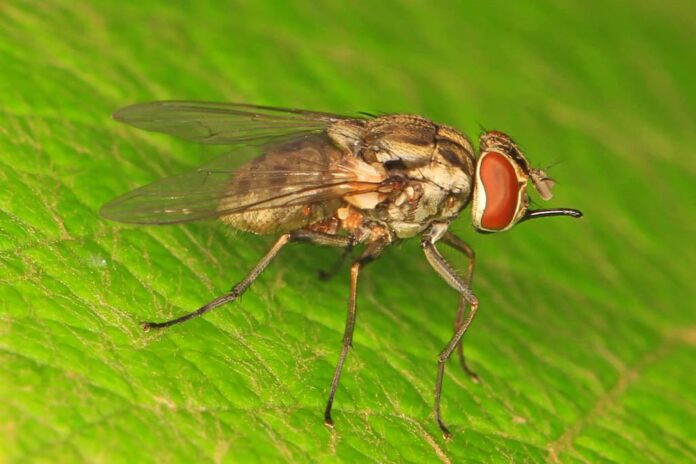
Stable flies have a small gray body with several stripes, and they have stiletto-like proboscis extending forward beyond the head. These flies use the proboscis to pierce the skin and draw blood from their hosts including humans, livestock, and pets. This species usually appear in the late summer to fall, and they typically bite in the morning or late afternoon. Both male and female stable flies feed on blood, and some of these diurnal flies are active throughout the year. The males will die shortly after mating while the females will die after laying all of their eggs.
The unique thing about them is that stable flies tend to bite people’s ankles, elbows, knees, and legs. On top of that, bites from these flies do not appear or irritate humans at all. At the same time, their bites also rarely result in allergic reactions. At the same time, stable fly infestation is almost common in some areas in the United States. The annoying thing about sandflies is that they are very persistent, and they often ignore swatting. This is why many animals use stamping and other violent tactics to avoid bites from them. Although not as dangerous as some fly species, too many of them in our living environment are equally bad.
7TseTse Fly
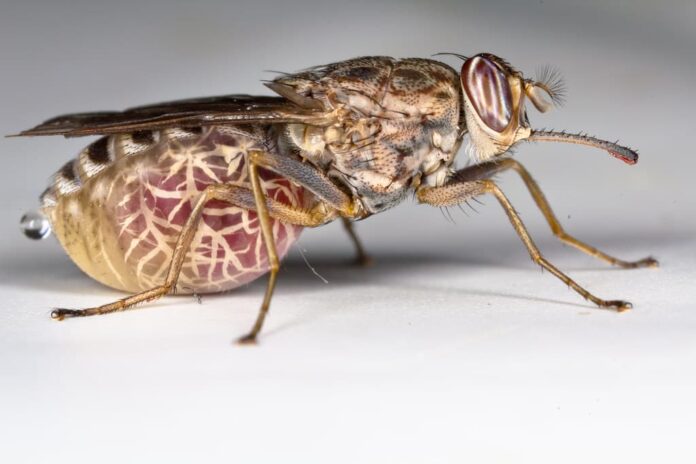
TseTse flies are small, but they are in fact the most dangerous fly species in the world. This annoying bug is tiny, and its mouth points forward which helps it to feed on animals and humans easily. This fly species is found in Africa, living in damp areas along lakes and riverbanks as well as tropical forests. Both of them are attracted to large moving objects and color blue, and they are active during the hottest part of the day. Male tsetse flies usually attack humans while females prefer large animals.
As one of the dangerous disease vectors, tsetse flies carry diseases and parasites which they transfer to the animals and humans that they feed on. In humans, these flies can spread a serious disease called “sleeping sickness” which can be very fatal. The symptoms include emaciation of the body, fever, headache, and swollen lymph glands. There are 2 forms of this disease, and one of them produces long-lasting chronic symptoms that last for years. This disease kills between 250,000 to 300,000 people every year. As for domestic animals, they also experience a similar disease known as “nagana”.
8Yellow Fly
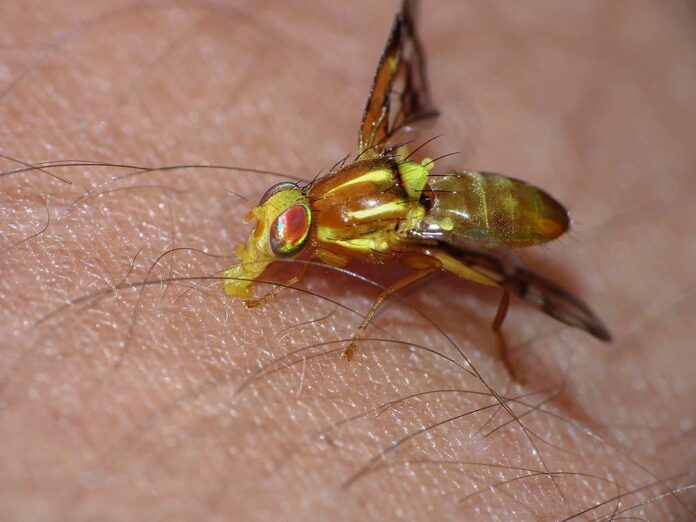
Looking similar to deer flies, yellow flies have small bodies but with a yellow abdomen and hair stripe down the middle. This species is active in hot summer and early fall weather, especially during daylight hours. More than that, they are among the few species that attack indoors. Yellow flies are rather quiet so the person is not aware of their presence until the pain of the bite begins. Because they attack indoors, pets especially dogs are one of the most common victims of these flies.
Very common in Florida, yellow flies are fierce biters that can inflict quite a pain on the skin. Female yellow flies are one of the most serious biting fly pests, making them one of the most dangerous fly species. Their bites are not only painful but also large, itchy, and swollen. To people who are allergic and sensitive to fly bites, the symptoms can be dangerous hypersensitivity and other systematic reactions. Although aggressive, yellow flies don’t really transmit any fatal diseases to the hosts which is at least a good thing.
Related Post: Most Dangerous Wasps In The World

